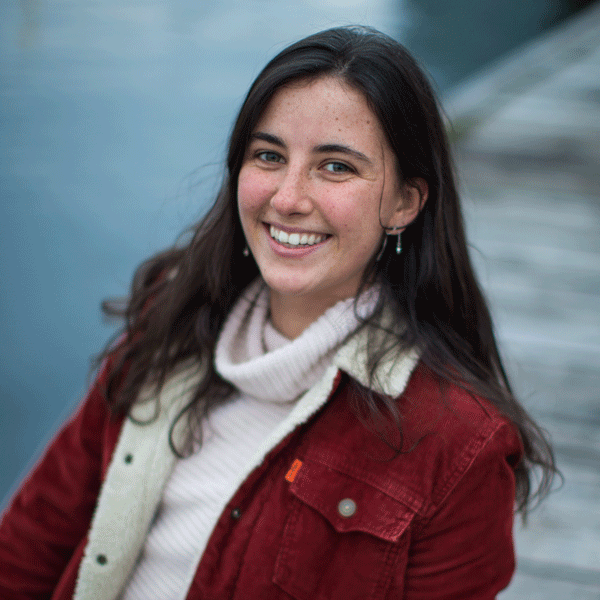Sam Cadigan ’21, a Colorado College art major with a concentration in integrative design and architecture, has received an honorable mention in the Parsons School of Design Role Models Competition for her senior thesis, Mourning Walk.
The competition, which highlights student projects exemplifying innovation using healthy materials, is sponsored by the Healthy Materials Lab, a research lab within the Parsons School of Design. The lab notes it is “dedicated to a world in which people’s health is placed at the center of all design decisions.”
“We choose winners who exemplify innovation, use healthy materials or healthy strategies and/or advocate through design,” notes the famed New York City college. “We are committed to raising awareness about toxics in building products and to creating resources for the next generation of designers and architects to make healthier places for all people to live.”
In Cadigan’s capstone project, Mourning Walk (note the play on words), she explores “alternative burial methods that focus on sustainability and resource scarcity in the arid Southwest. My intent is creating a burial alternative and space that promotes building community and rethinking grief in America.” Cadigan adds that seeing bodies “essentially being dumped on the potter’s island off the coast of New York City earlier this year due to Covid, because many couldn't afford proper burials, made me want to rethink accessibility, expenses, and resources related to death and burial.
“Despite a challenging year, I think COVID forced me to face grief, assist others through grief, and rethink what kind of mark we leave on this world,” says Cadigan.
She used Fairview Cemetery in Colorado Springs as her primary example site and experimented with creating adobe bricks that would ultimately create a series of wall sections. The project rethinks the quintessential North American cemetery, and instead proposes a “climate appropriate space that houses a rhythmic wall constructed of bricks made from a mixture of human cremation (ashes) and adobe.”
Cadigan says a semester in Denmark studying sustainability in the context of urban spaces, CC Art Department design workshops, and an Environmental Justice class taught by Associate Professor of Political Science Corina McKendry, have been “massive influences in my interests and practice, allowing me to explore both ecological and human-centered disciplines.”
Professor of Art Ruth Kolarik, who has been on the faculty of Colorado College for more than 40 years, was Cadigan’s academic adviser. Says Kolarik of her advisee, “Combining her design skills with a strong commitment to social and environmental issues, she embodies the goals of our integrative design and architecture track in the art major. It was a pleasure to see her project come together from her initial research, more than a year ago, and memories of walks in the woods with her grandmother to the final version that is both responsive to our local environment and beautifully designed.”
The Art Department requires majors to undertake serious and substantive independent work that results in a thesis project. Students must identify a topic of interest, examine a specific problem and carry out independent research and analysis over an extended time.



